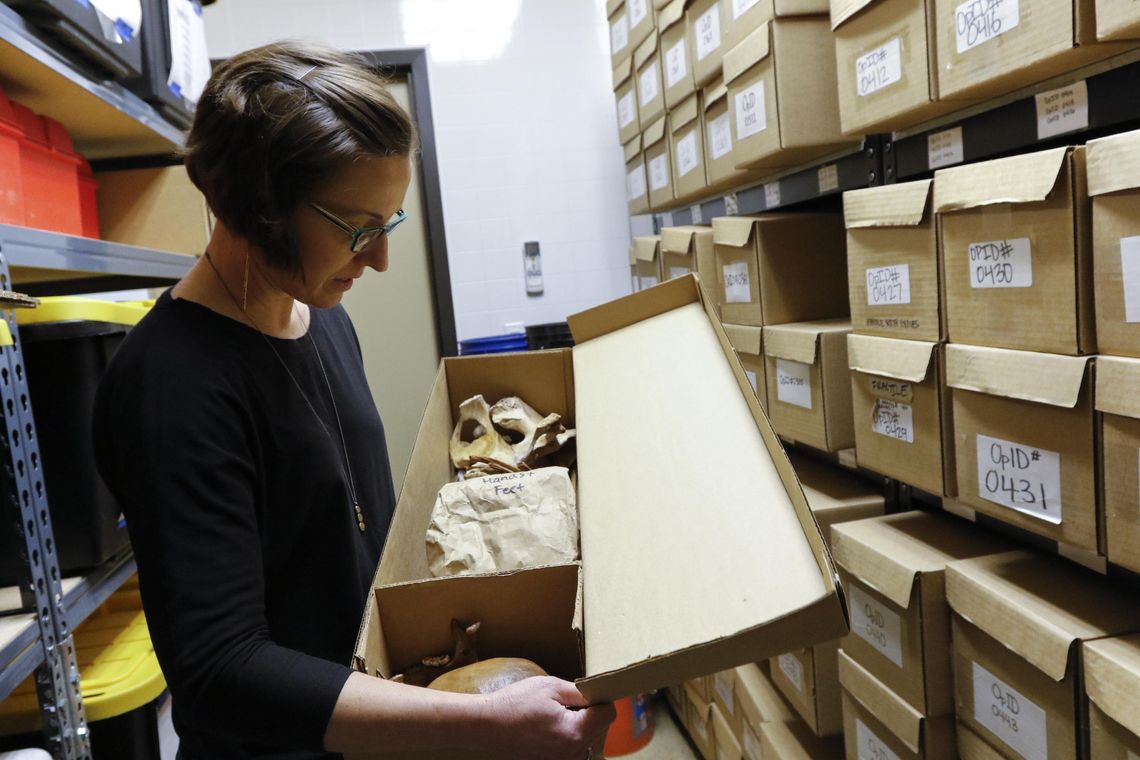In the storage room in Texas State University’s Osteology Research and Processing Laboratory, forensic anthropologist Dr. Kate Spradley takes down one of the cardboard boxes that fill the room’s shelving units — nearly 200 boxes in all. Inside the box are a skull, several large bones and a brown bag labeled “hands and feet” in black marker. The remains, as with all of the boxes, belonged to a migrant who died after crossing the border into Texas.
The remains got to Spradley’s facility as part of Operation Identification, a service-learning project founded by Spradley in 2013 that seeks to restore identities to the remains of migrants recovered from the Rio Grande Valley region. Her project is one of many in the Forensic Border Coalition, a group of nongovernmental agencies, that works to address barriers to the identification of migrant remains.
When Spradley came to teach at Texas State University a decade ago, she had no idea what happened to the migrants who died in Texas. In 2012 it seemed to her that news reports were filled with stories of record-high numbers of deaths in Texas of Central Americans fleeing violence, but little information was available about how authorities were handling the bodies.








